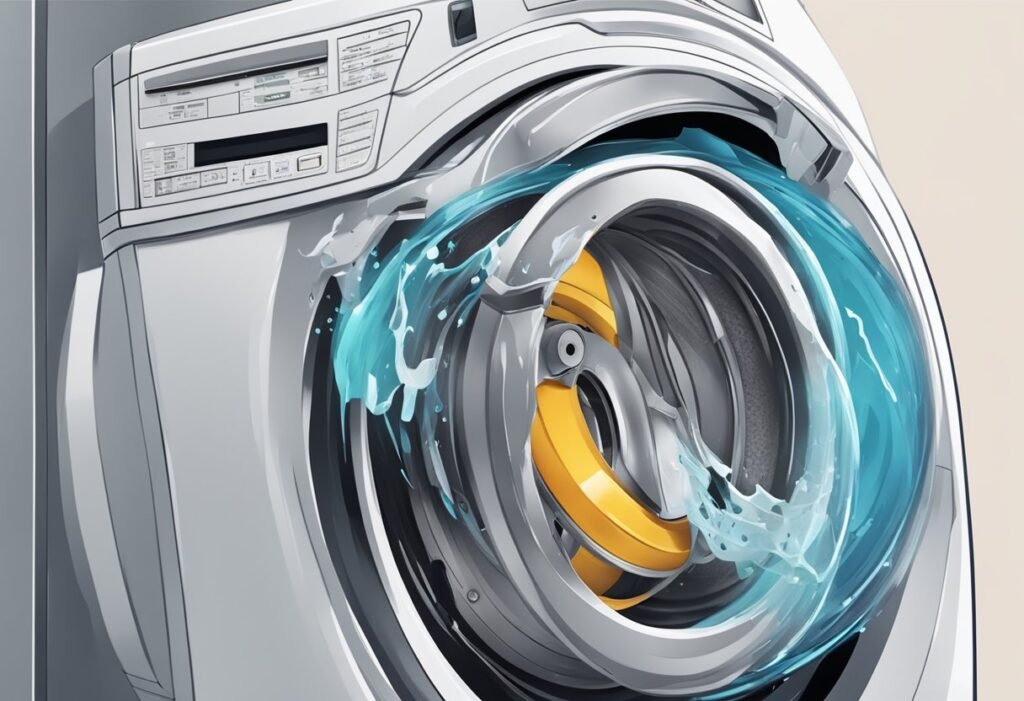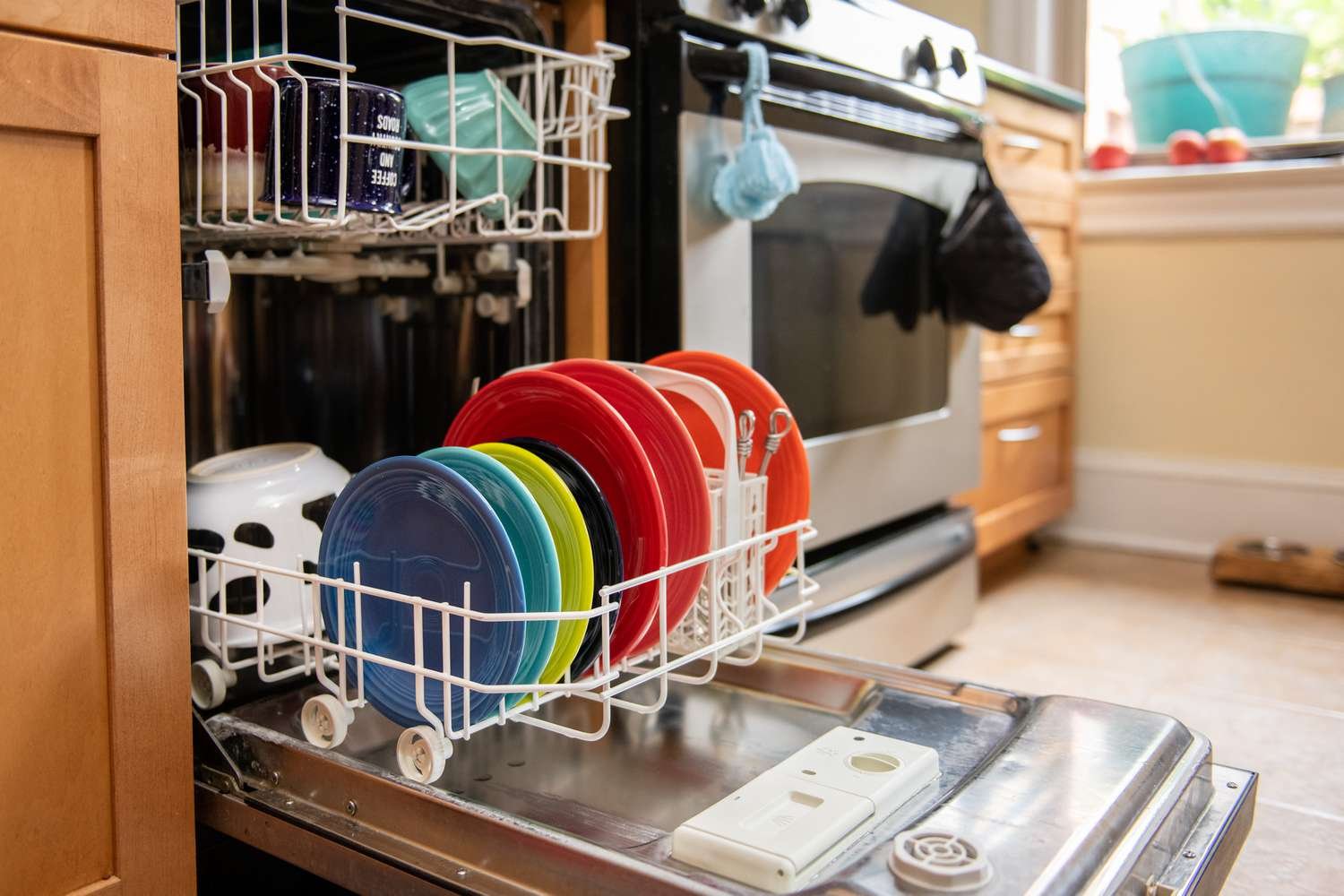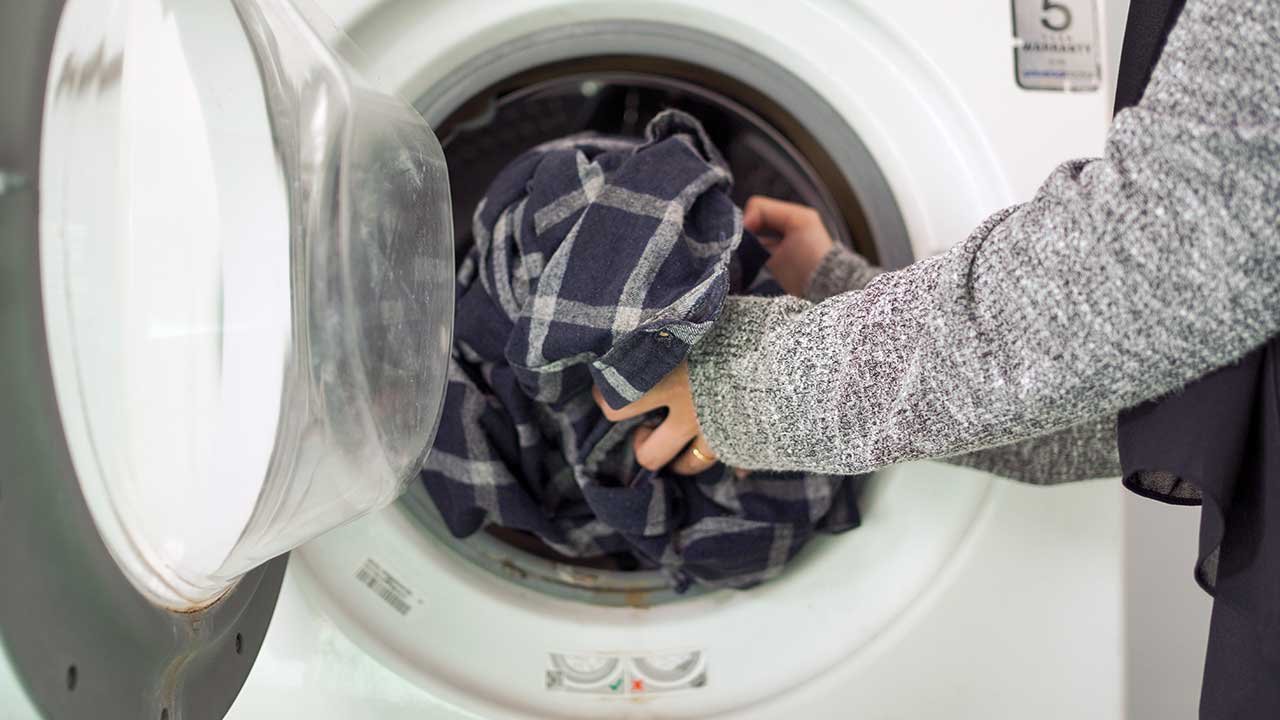If you’re hearing strange noises coming from your washing machine, it could be a sign that the bearings have gone bad. The bearings are an essential component of your washing machine that allow the drum to spin smoothly. When they wear out or become damaged, they can cause a range of issues that can affect the performance of your machine.
How do you know if washing machine bearings have gone? One of the most common signs that your washing machine bearings have gone bad is a loud grinding or squealing noise during the wash cycle. You may also notice that your machine is vibrating more than usual or that it’s leaking water from the bottom. If you’re experiencing any of these symptoms, it’s essential to address the problem as soon as possible to avoid further damage to your machine.
Table of Contents
Identifying Washing Machine Bearing Failure

If you hear unusual noises coming from your washing machine, it could be a sign that the bearings have gone bad. Grinding or squealing noises during the wash cycle are a common symptom of bearing wear. These noises may be especially noticeable during the spin cycle. If you hear these noises, it’s best to stop using your washing machine and investigate the issue further.
Unusual Noises
Unusual noises are the most common sign of washing machine bearing failure. If you hear grinding or squealing noises during the wash cycle, it could indicate bearing wear. These noises may be especially noticeable during the spin cycle. If you hear these noises, it’s best to stop using your washing machine and investigate the issue further.
Excessive Movement
If you notice that your washing machine is vibrating or moving excessively during the wash cycle, it could be a sign that the bearings are starting to come loose. This can cause the drum to wobble and may eventually lead to bearing failure. If you notice excessive movement, it’s best to stop using your washing machine and investigate the issue further.
Leaking
Water leaking from the bottom of your washing machine is a telltale sign of bearing failure. This is because the bearings are responsible for supporting the weight of the drum. If they become worn or damaged, the drum can start to sag and leak water. If you notice water leaking from your washing machine, it’s best to stop using it and investigate the issue further.
Error Codes
Some washing machines have error codes that can indicate bearing failure. If your washing machine displays an error code, check the user manual to see if it relates to bearing failure. If it does, it’s best to stop using your washing machine and investigate the issue further.
By identifying these signs of washing machine bearing failure, you can take action to prevent further damage to your machine. If you suspect that your washing machine bearings have gone bad, it’s best to stop using your machine and consult a professional for repairs.
Role Of Bearings In Washing Machine
Washing machine bearings play a vital role in the proper functioning of your washing machine. They are responsible for supporting the weight of the drum and allowing it to spin smoothly. Over time, washing machine bearings can wear out and fail, causing a range of problems, including excessive noise, vibration, and even leaks. In this section, we will discuss the function of bearings, types of bearings, and their location in the washing machine.
Function of Bearings
The primary function of washing machine bearings is to support the weight of the drum and allow it to spin smoothly. They are designed to withstand the high speeds and loads associated with washing machine operation. Bearings are typically made of steel or ceramic and are lubricated to reduce friction and wear.
Types of Bearings
There are two main types of bearings used in washing machines: ball bearings and roller bearings. Ball bearings are the most common type and are used to support the drum in both front-loading and top-loading washing machines. Roller bearings are typically used in front-loading washing machines and offer improved load capacity and durability.
Location in Washing Machine
Washing machine bearings are located at the back of the drum, where they are attached to the drum shaft. In front-loading washing machines, the bearings are located behind the drum, while in top-loading machines, the bearings are located beneath the drum. In both cases, the bearings are housed in a bearing assembly that is designed to protect them from water and other contaminants.
In summary, washing machine bearings play a critical role in the proper functioning of your washing machine. Understanding the function, types, and location of bearings can help you diagnose and repair problems with your washing machine.
Inspecting Bearings
When it comes to determining whether washing machine bearings have gone bad or not, there are a few things you can do. In this section, we’ll go over two methods for inspecting bearings: visual inspection and manual testing.
Visual Inspection
The first step in inspecting your washing machine bearings is to visually inspect them. This involves checking for any signs of wear or damage. Here’s how:
- Turn off your washing machine and unplug it from the power source.
- Open the door and locate the drum. Look for any signs of rust or corrosion around the drum. If you notice any, this could be a sign that the bearings have gone bad.
- Reach inside the drum and try to move it up and down. If you notice any excessive movement or wobbling, this could also be a sign that the bearings are worn out.
- Finally, inspect the bearings themselves. Look for any signs of wear or damage. If you notice any cracks, chips, or other damage, this is a sign that the bearings need to be replaced.
Manual Testing
Another method for inspecting your washing machine bearings is manual testing. This involves physically testing the bearings to see if they are still in working order. Here’s how:
- Turn off your washing machine and unplug it from the power source.
- Locate the drum and remove it from the machine.
- Once you have the drum out of the machine, locate the bearings. They should be located at the back of the drum.
- Spin the bearings with your hand. If they spin smoothly and quietly, they are still in good working order. However, if you notice any grinding or squeaking noises, this is a sign that the bearings have gone bad and need to be replaced.
By performing a visual inspection and manual testing, you can determine whether your washing machine bearings have gone bad or not. If you notice any signs of wear or damage, it’s important to replace the bearings as soon as possible to prevent further damage to your machine.
Consequences of Bearing Failure
If your washing machine bearings have gone bad, it can lead to several consequences. In this section, we will discuss some of the most common problems that can occur due to bearing failure.
Damage to Other Components
When your washing machine bearings are bad, it can cause damage to other components of the machine. The bearings are responsible for keeping the drum of the washing machine in place and allowing it to spin smoothly. If the bearings are damaged, it can cause the drum to wobble and create excessive vibration. This can cause damage to other components of the machine, such as the motor, belt, and pulley.
Reduced Efficiency
A washing machine with bad bearings can also lead to reduced efficiency. The machine may take longer to complete a cycle, and the clothes may not be cleaned as thoroughly. This is because the drum is not spinning properly, which can prevent the clothes from being agitated properly. Additionally, the machine may use more energy to complete a cycle, which can increase your energy bills.
Potential Safety Hazards
Finally, bad bearings can also pose a safety hazard. If the bearings are severely damaged, they can cause the drum to become loose and potentially detach from the machine. This can be dangerous, as the drum can be heavy and cause injury or damage to the machine or surrounding area.
In summary, if you suspect that your washing machine bearings have gone bad, it is important to address the issue as soon as possible to prevent further damage and potential safety hazards.
Also Read: Signs of broken drain pump.
Repair or Replace
When your washing machine bearings have gone bad, you may be wondering if it’s worth repairing the machine or if it’s time to replace it. Here are a few factors to consider when making this decision.
Assessing Repair Costs
The first thing you should do is assess the cost of repairing your washing machine. This will depend on the extent of the damage and the cost of replacement parts. If the cost of repairs is more than half the cost of a new machine, it may be more cost-effective to replace the machine.
DIY vs Professional Repair
If you’re handy with tools and have experience repairing appliances, you may be able to repair your washing machine bearings yourself. However, if you’re not comfortable with DIY repairs, it’s best to hire a professional. Keep in mind that professional repairs can be expensive, so factor in the cost of labor when deciding whether to repair or replace your machine.
When to Replace the Machine
If your washing machine is more than 10 years old and has multiple issues, it may be time to replace it. Newer machines are more energy-efficient and have more advanced features than older models. Additionally, if your machine is beyond repair, replacing it may be your only option.
Ultimately, the decision to repair or replace your washing machine bearings will depend on a variety of factors, including the cost of repairs, your DIY skills, and the age of your machine. Consider all of these factors carefully before making a decision.
Preventive Maintenance
To avoid having to deal with washing machine bearings that have gone bad, it is important to take care of your washing machine through regular preventive maintenance. Here are some simple steps to follow:
Regular Cleaning
One of the most important things you can do to keep your washing machine running smoothly is to clean it regularly. This means wiping down the exterior of the machine with a damp cloth and cleaning the detergent dispenser and drum after each use.
It is also important to clean the lint filter regularly to prevent lint buildup, which can cause the machine to work harder and lead to premature wear and tear on the bearings.
Proper Usage
Another important aspect of preventive maintenance is using your washing machine properly. This means not overloading the machine, using the appropriate amount of detergent, and selecting the correct cycle for the type of clothing being washed.
Overloading the machine can cause excessive strain on the bearings, while using too much detergent can lead to soap buildup, which can also cause problems.
Routine Service Checks
Finally, it is important to have your washing machine serviced regularly to catch any potential problems before they become serious. This means having a professional technician perform routine service checks, such as checking the bearings for wear and tear, and replacing them if necessary.
By following these simple steps, you can help prevent washing machine bearings from going bad, and ensure that your machine runs smoothly for years to come.
FAQ
How Can You Tell If Washing Machine Bearings Have Gone Bad?
If you notice excessive noise during the spin cycle or find water leaking from the bottom of your washing machine, it could be a sign that the bearings have gone bad. Additionally, if the drum feels loose or uneven when you try to move it, it’s likely that the bearings need to be replaced.
What Causes Washing Machine Bearings To Go Bad?
Over time, the constant use and high-speed spinning of the washing machine can cause wear and tear on the bearings. Inadequate lubrication, heavy loads, and washing machine imbalance can also contribute to the deterioration of the bearings, leading them to go bad.
Regular maintenance and proper usage can help prolong their lifespan.
Can You Still Use A Washing Machine With Bad Bearings?
It is not recommended to continue using a washing machine with bad bearings. Not only can it lead to further damage to the machine, but it may also result in decreased cleaning effectiveness and potentially pose a safety risk.
It’s best to have the bearings replaced as soon as possible to restore the machine’s performance.
How Long Do Washing Machine Bearings Last?
The lifespan of washing machine bearings can vary depending on factors such as usage frequency, load capacity, and maintenance. Generally, bearings can last between 5 to 10 years with proper care and regular maintenance. However, if they are not well-maintained or subjected to excessive strain, they may need to be replaced earlier.
Bottom Line
Identifying washing machine bearing issues is essential for preventing further damage. Regular maintenance and timely repair can extend the appliance’s lifespan. Knowing the warning signs helps in taking necessary action and avoiding more significant problems. Keep an eye out for noise, leaks, and unusual vibrations to address bearing issues promptly.
Regular checks can save you time and money in the long run.



